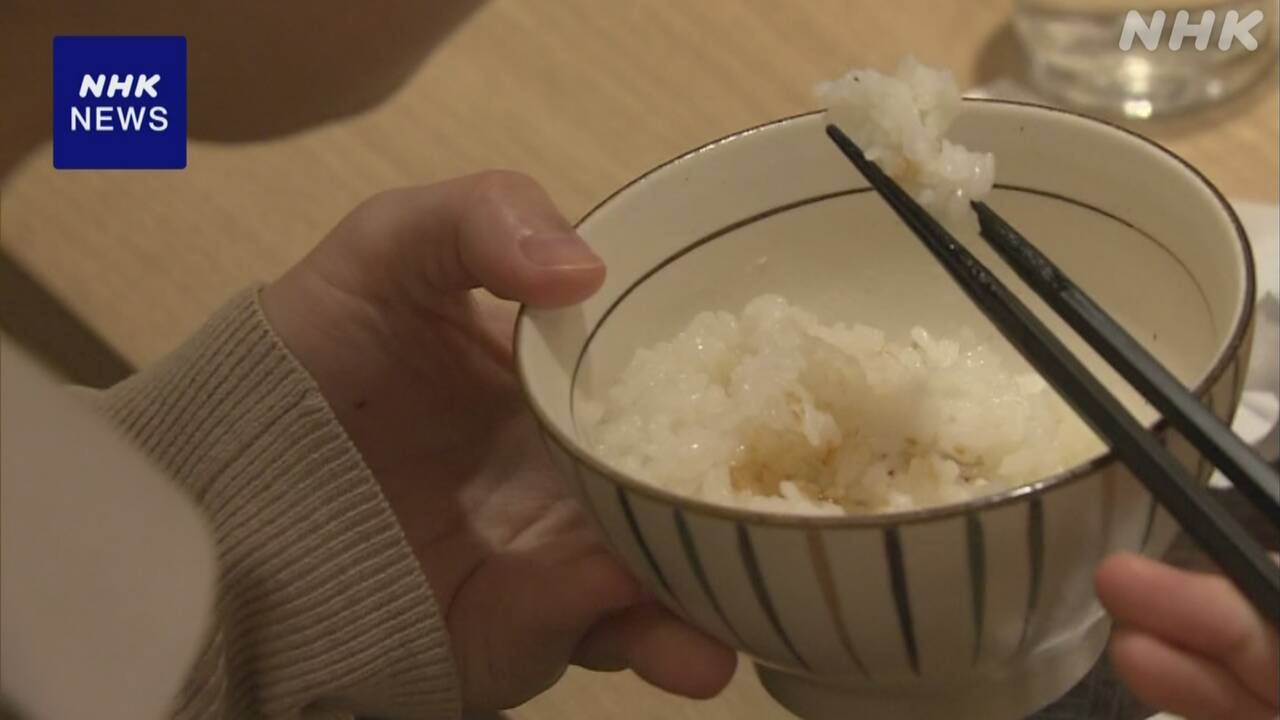At a review meeting held on the 6th, the Ministry of Health, Labor and Welfare compiled a proposal for the ``Japanese Dietary Intake Standards,'' which sets standards for the intake of energy and nutrients that should be taken from meals in order to stay healthy.
The Dietary Intake Standards for Japanese people are compiled by the Ministry of Health, Labor and Welfare about the energy and nutrients that people should ingest to stay healthy, and are revised once every five years.
On the 6th, a review committee of the Ministry of Health, Labor and Welfare compiled a proposal for standards that will be applied from the year after next.
According to the proposal, the amount of energy required per day for people with a normal level of physical activity is
2,600 to 2,750 kcal for men between the ages of 18 and 64, and 1,950 to
2,050 kcal for women between the ages of 18 and 64. The aim is to do so.
Regarding dietary fiber, the latest research has shown that the more you eat, the lower the incidence of lifestyle-related diseases such as cancer and diabetes. I set it at 25 grams per day, which is 1 gram higher than the standard.
However, the median dietary fiber intake of Japanese people, based on the 2018 and 2019 National Health and Nutrition Surveys, is approximately 13.3 grams per day for adults over 18 years old, which is considerably lower than the ideal intake. Therefore, the Ministry of Health, Labor and Welfare has set a standard for adults to aim for intake of 20 to 22 grams or more per day for men, and 17 to 18 grams or more for women, depending on age.
In addition, with regard to salt, the goal for adults is to intake less than 7.5 grams per day for men and 6.5 grams for women, as increased intake increases the risk of high blood pressure.
The Ministry of Health, Labor and Welfare plans to officially compile and publish these standards, and they will be used for school lunches and nutritional management at medical and nursing care facilities starting next year.
Expert: "It's important not to skip meals"
Regarding dietary fiber intake, Professor Katsushi Yuda of Osaka Public University Graduate School, who is knowledgeable about ways to improve nutrition, says, ``It's difficult to consume vegetables all at once.Japanese people's intake of dietary fiber is not at a high level, so first of all, It is important not to skip breakfast. People who skip breakfast will find it impossible to eat the same amount of vegetables in the afternoon or evening, so I would like people to make up for the lack by eating breakfast without skipping it. We were talking.
Then, ``When ingredients are overheated, they become smaller and easier to eat, so you can make overheated foods the day before and just heat them up in the microwave in the morning and eat them, or eat bananas that are easy to eat.'' "Rather than supplementing with food, I would like people to eat staple foods, vegetables, and fruits little by little."
Furthermore, according to Professor Yuda, you can increase your dietary fiber intake by changing the type of staple food you eat.
For example, a bowl of 150 grams of white rice has 2 grams of dietary fiber, but if you switch to germinated brown rice, you'll get 2.5 grams, and one roll will give you 1 gram of dietary fiber, but if you switch to French bread, you'll get 1.3 grams. That's it.
Professor Yuda said, ``It may seem like a small difference, but since it is a staple food and is eaten often, I hope people will be careful about the types of foods they eat, and use this revision of the standards as an opportunity to reconsider their eating habits.'' I was talking.

